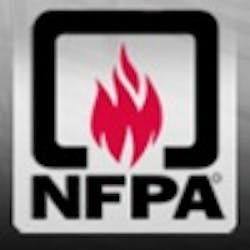U.S. Centers for Medicare & Medicaid Services updated fire code requirements
The US. Centers for Medicare & Medicaid Services (CMS) has published Medicare and Medicaid Programs; Fire Safety Requirements for Certain Health Care Facilities that requires healthcare facilities to migrate from using the 2000 edition of NFPA 101®, Life Safety Code® (LSC) to the 2012 edition; and mandates direct compliance with the 2012 edition of NFPA 99, Health Care Facilities Code, for the first time. Since 1970, hospitals, nursing homes, ambulatory surgical centers and related facilities have needed to demonstrate that their fire and life safety programs satisfied different editions of NFPA 101 in order to meet the requirements of the Conditions of Participation (COP), as defined by CMS. Health care providers that participate in federal reimbursement programs are required to meet the CMS COP expectations.
The federal rule making process to recognize the 2012 NFPA code edition requirements was a long term initiative that garnered more than 350 public comments when the draft rule was published in 2014. Healthcare facilities are expected to update and comply with NFPA 99 and NFPA 101, respectively by July 5, 2016.
CMS identified several provisions of the 2012 editions of the LSC and NFPA 99 that have been permitted for use since 2012. A number of substantive changes made to the 2012 editions of NFPA 99 and NFPA 101 were already permitted through the categorical waiver process outlined in Survey & Certification (S&C) letters. Code elements such as furniture and equipment in corridors, community cooking options, special door locking permissions, medical gas master alarms monitored by a central computer, and emergency generator testing are among the already permitted subjects.
“Consideration for new sleeping and treatment suite designs, person-centered care models, and equipment currently used in the healing environment are just a few of the changes integrated into the 2012 edition of NFPA 101,” Robert Solomon, NFPA division manager for building fire protection and life safety said. “Acknowledging these changing factors and the risk-based assessment currently required by NFPA 99 - and used by providers, designers and AHJs -ensures that patients and residents are provided the level of fire and life safety protection expected today.”
In anticipation of this final rule, NFPA has amassed relevant resources to help users as they transition from the 2000 edition of these two codes to the 2012 versions. Among the products and programs being offered by NFPA are:
- Quick Compare Life Safety Code 2000 & 2012 for Health Care
- Life Safety Code Handbook – 2012
- Health Care Facilities Code Handbook – 2012
- Life Safety Code (2012) Essentials for Health Care Occupancies Class Room Training
- Certified Life Safety Specialist (CLSS-HC) Certification Program
NFPA will also be facilitating a series of short, on-demand programs to help familiarize code users with the 2012 edition of these codes.
